This post is part of a series on the collection of ornithologist William Brewster (1851-1919) at the Ernst Mayr Library, written by Elizabeth Meyer, library project assistant.
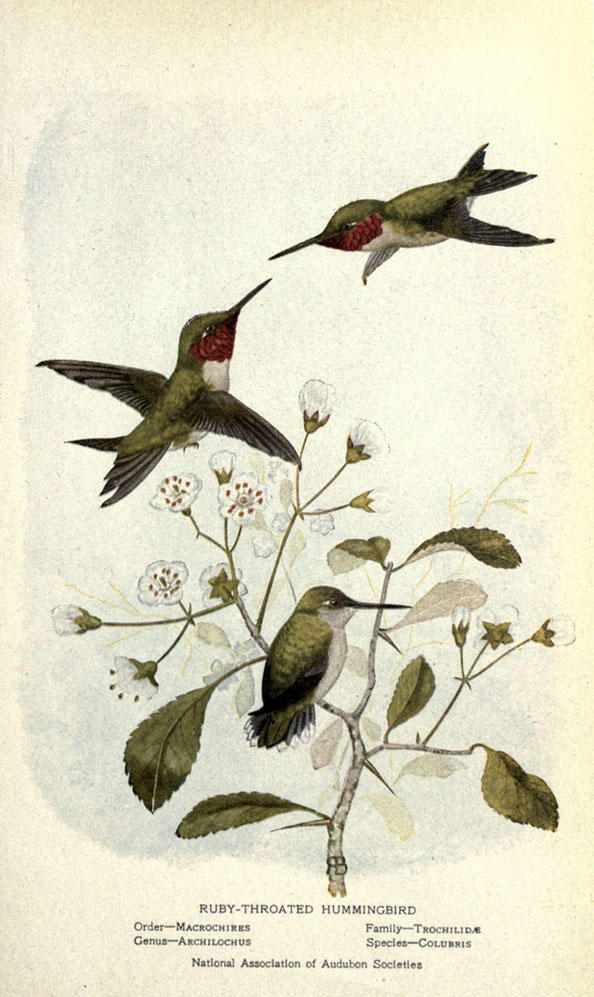
Illustration of ruby-throated hummingbirds, from 'Portraits and habits of our birds' v.2. New York city: National association of Audubon societies,1920. See volume on BHL.
In the spring and summer, William Brewster often camped at Lake Umbagog on the border of Maine and New Hampshire, where he spent his days tracking the progress of bird nests around the lake and taking other general field notes.
Because he returned to study sites year after year, he was able to notice longer-term changes in the familiar ecosystems he had lived in. Increasingly, these changes were man-made disturbances: the clearing of woods, the creation of new roads, and other urbanizing developments.
He also recorded how local communities of animals and plants responded after these disturbances. The following passages from Brewster’s field notes illustrate some changes that he saw in the Maine woods as a consequence of logging for paper mills, and also include his own predictions.
He penned these observations on ecological succession just a few years before the first scientific paper on this concept was published. ("An Ecological Study of the Sand Dune Flora of Northern Indiana", Henry Chandler Cowles, 1898. More info.)
Where the road passes through the woods … the roadworkers last May cut away the mountain maples, cornels and other shrubs and low trees that made such a beautiful border to the forest clearing in their places a broad belt of bare rocks half covered with the fallen brush wood. This deed of vandalism was performed while I was here and at the time I feared that years must elapse before Nature, with all her diligence, could repair the injury.
I underrated her powers for already this thicket of road is, if anything, more beautiful than ever. Fire weed, Eupatorium, Impatiens, Asters, Golden rod and several other tall and rank flowering plants have shot up through and almost perfectly concealed the unsightly brush and stone heaps and I have rarely seen a more brilliant or attractive display of wild flowers. The fire weed is especially tall and fine and the jewel weed grows in solid beds yards in extent. Of course the Humming birds had not overlooked such a feeding ground. There were at least three of them there at once including an adult male with blazing ruby throat at which I fired an ineffectual shot. (August 15th, 1896. Lake Umbagog, Maine.)
In this instance, Brewster noticed that one year was enough time to see plant growth after the woods had been cleared. He also noticed that the colonizing plants were different from the ones that characterized the location before, and that they had attracted animal life.
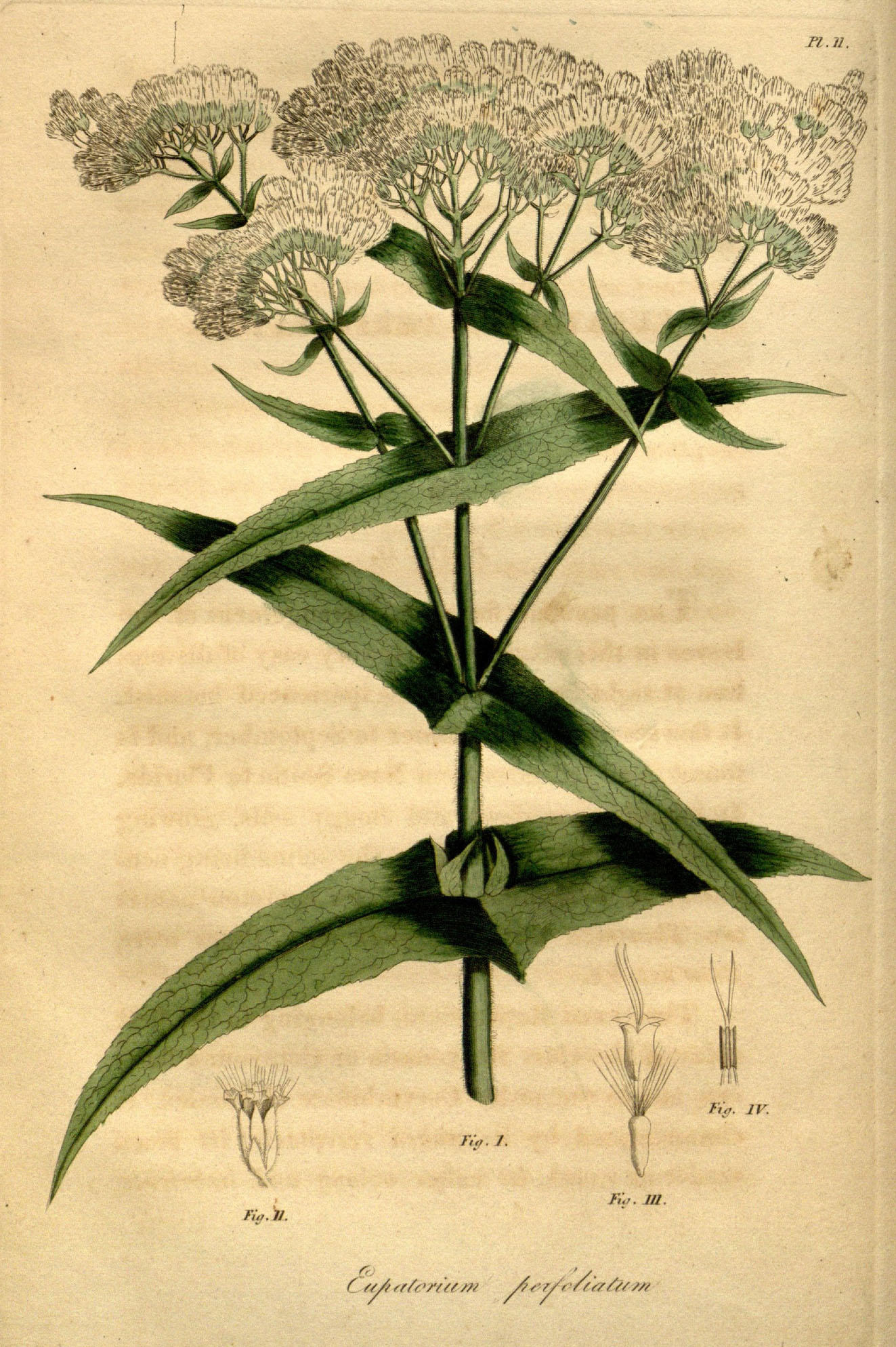
Illustration of a plant in the genus Eupatorium, from 'American medical botany'. Boston: Cummings and Hilliard,1817-1820. See volume on BHL.
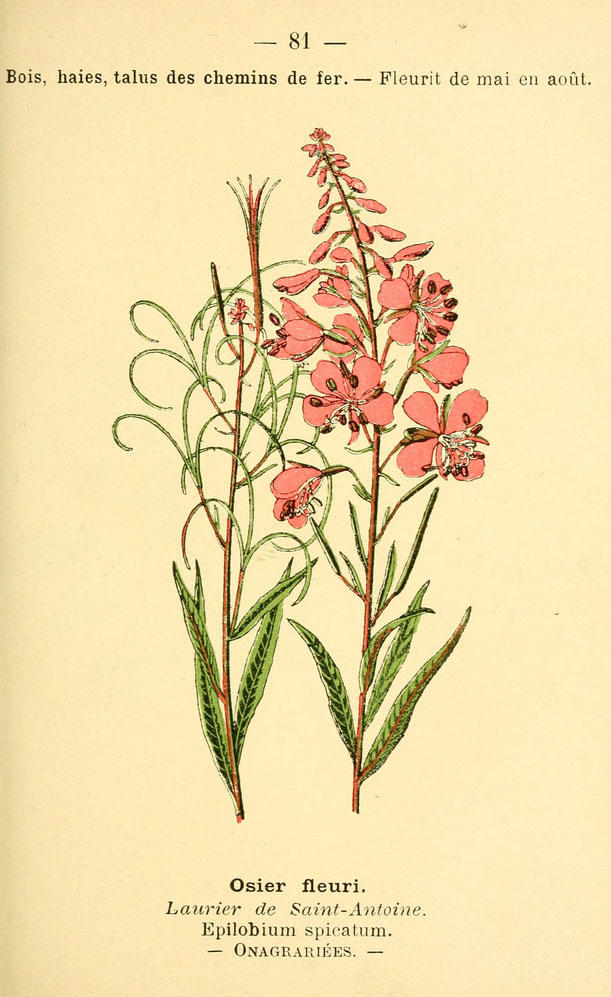
Illustration of fireweed, from 'Atlas de poche des plantes des champs, des prairies et des bois'. Paris :P. Klincksieck, 1894. See volume on BHL.
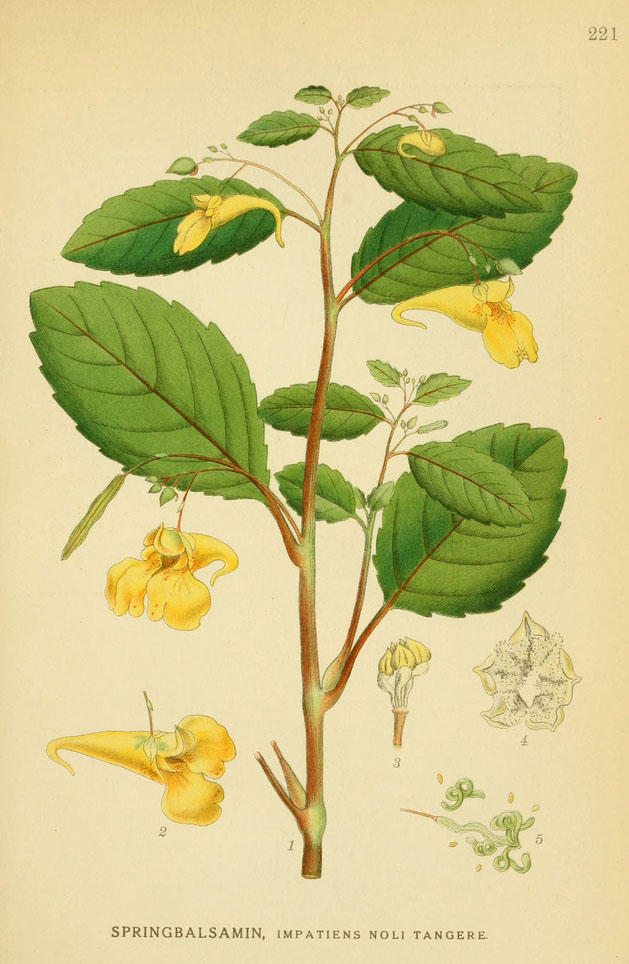
Illustration of jewelweed, in the genus Impatiens, from 'Billeder af nordens flora'. v.1 København,G.E.C. Gad's forlag,1917-1927. See volume on BHL.
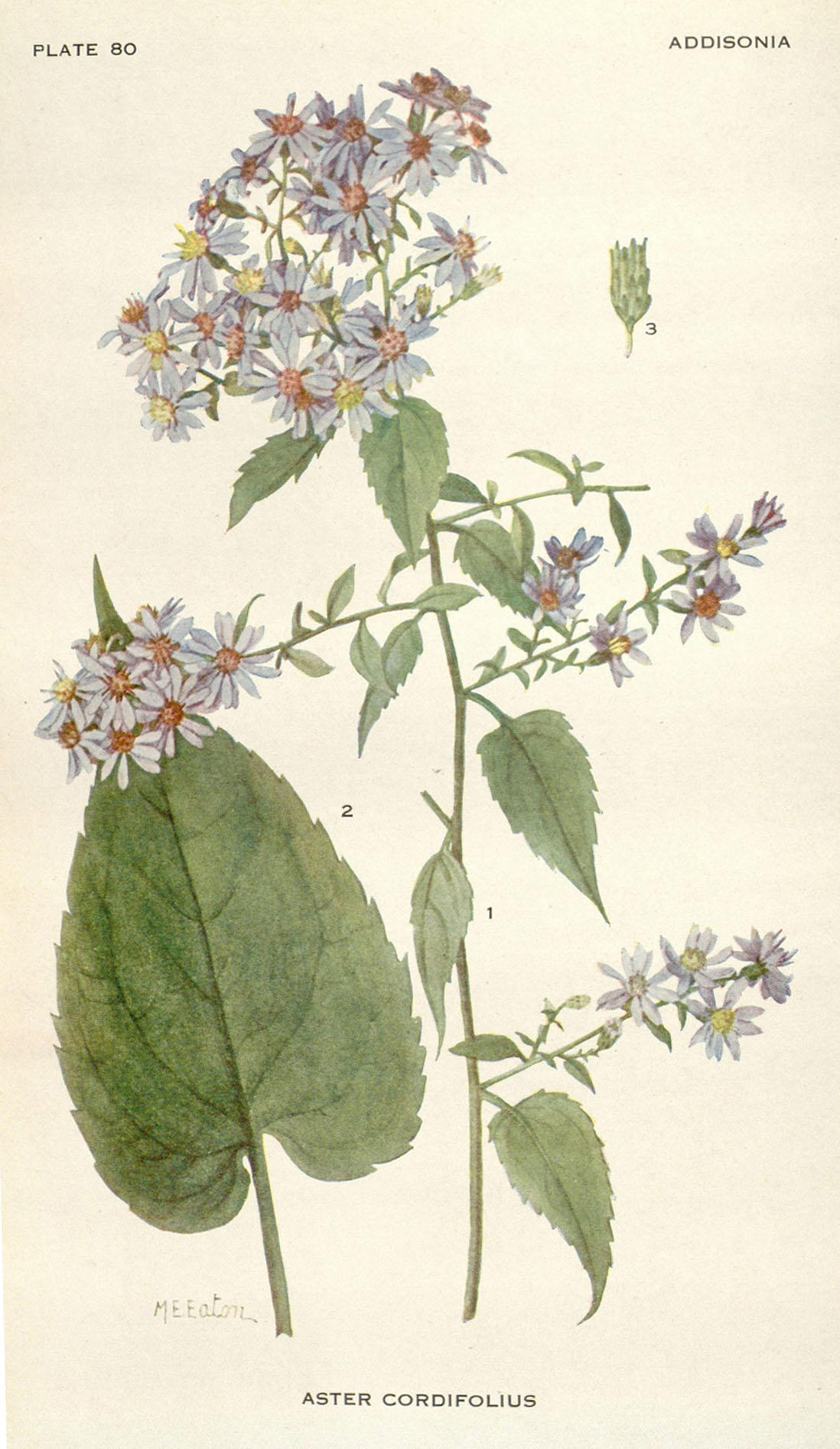
Illustration of an aster, from 'Addisonia'. New York: New York Botanical Garden, 1916. See volume on BHL.
The following year, he wrote:
The Lake shore has been sadly marred … by the lumbermen who last winter cut all the spruces and many of the fine, tall white pines all the way from this landing to the deep cove near the Tidswell place.
Lumbering is a very different business now from what it was twenty years ago. Then only the larger trees were taken; now the pulp mills devour everything and nothing is spared thicker at the base than five inches! The spruce forests of this whole region are, indeed, fast melting away & the mountain slopes are changing rapidly as the dark evergreens are weeded out by the lumbermen, leaving only the hardwoods & a few unsound white pines. The hemlocks, however, are not as yet molested.
These changes in the character of the forests must make speedy & considerable changes in the bird fauna.The shore near Crocker's camp, for instance, has been one of the chief breeding grounds for the Bay breasted Warbler. They will breed there no longer, now that all the spruces are gone. (May 15th, 1897. Lake Umbagog, Maine.)
Naturalists were becoming increasingly aware that human activity does affect seemingly resilient animal populations. Knowing that local extirpations and even total extinction can occur - this was the decade when the passenger pigeon disappeared from the wild - he would have penned this prediction with heavy heart.
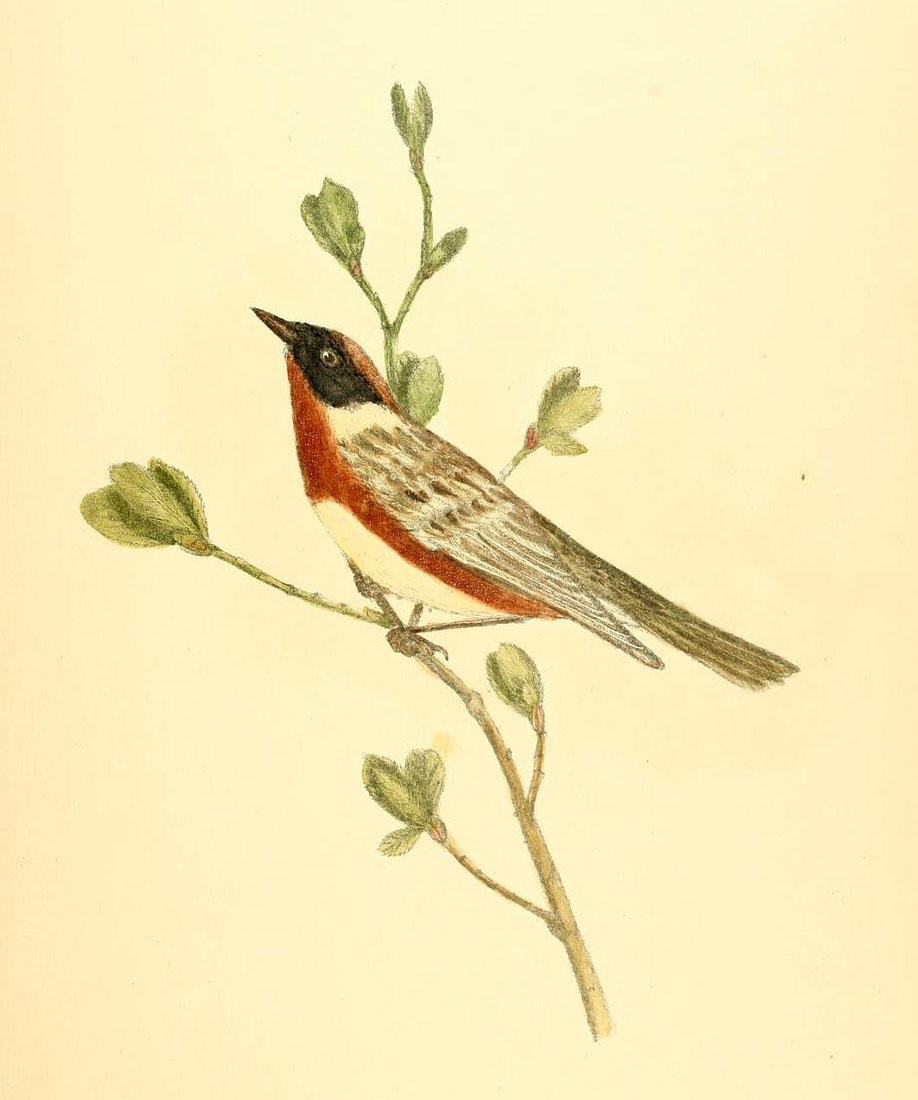
Illustration of a Bay-breasted Warbler, from ‘The birds of eastern North America’. Newtonville, Mass. : C.J. Maynard & co., 1896. See volume on BHL.

